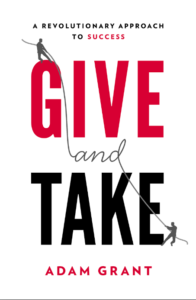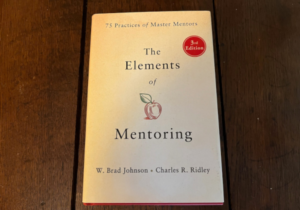Excellent Read for the Optimistic Academic: Give and Take by Adam Grant
 Adam Grant’s New York Times Best Seller Give and Take has been heralded by Daniel Pink as “A rare work that will shatter your assumptions about how the world works and keep your brain firing for weeks after you turned the last page.” As a brain scientist, I can pretty much guarantee that unless you’re dead, your brain will be firing with or without this awesome book, BUT Grant absolutely delivers for despondent scientists and physicians who are under increasing pressures to produce, turn away from mentoring others and focus on the bottom lines of getting grants and seeing more patients.
Adam Grant’s New York Times Best Seller Give and Take has been heralded by Daniel Pink as “A rare work that will shatter your assumptions about how the world works and keep your brain firing for weeks after you turned the last page.” As a brain scientist, I can pretty much guarantee that unless you’re dead, your brain will be firing with or without this awesome book, BUT Grant absolutely delivers for despondent scientists and physicians who are under increasing pressures to produce, turn away from mentoring others and focus on the bottom lines of getting grants and seeing more patients.
If you are angst-ridden that your idealism may not survive the business of health care and diminishing rewards for training young minds in science and medicine, race to your library now and get this book.
Grant takes a traditional business read narrative of telling multiple stories of individuals who were on similar trajectories yet made radically different decisions. By identifying individuals with very similar backgrounds and potential, Grant puts forth their successes and picks up on a common theme where one group of individuals feels tired, bored and listless with the status quo and another moves to the next level within their chosen field.
One of the underlying themes of Grant’s book is the juxtaposition of Peacocks and Pandas he sets up in Chapter 2. You should probably take a brief moment to look at the cute little inset beside this and do a self-assessment of things you value at this point. I’ll be right here when you get back. I’m kidding. I’m not here. I already wrote this thing. Are you back? List A folks, or ‘peacocks’ are exceptionally good at garnering power, pulling in media attention to their business and themselves and often times they give generously of their wealth. They also dedicate themselves, often ruthlessly, to understanding ‘the score’…. how many favors they have given and to whom with the expectation that they can call upon the recipient of these favors to help them in the future.
Pandas need not be sworn to a life of poverty and philanthropy. Grant cites many examples of highly successful individuals who were very wealthy and ‘turning panda’ required them to know and use their understanding of business, politics, medicine and education infrastructure to advance. Based upon their experience and success, almost all of these stories involve taking brave steps outside of what could have brought even more wealth and power and choosing to do something that felt moral, immediate and involved mentoring others or providing platforms for their growth. These ‘pandas’ had nothing to gain from these, but in interviews provided by Grant, these leaders generally didn’t consider themselves brave in as much as they felt some combination of fustrated, bored, dissatisfied or useless.
As reader, I’m more than a bit cynical about business books written by rich white men for white men who want to be rich. But Grant doesn’t just deal in the rare air of the 1%. He presents practical steps for teachers, parents and families to take their lives to the next level by giving of themselves. Advice from social scientists Sonja Lyubomirsky who found that people felt more rewarded for longer periods of time by dedicating a day of service than small acts of service. That in depth giving experiences allowed pandas and want to be pandas to be present, recharged and focused on the tasks and challenges at hand for whomever they served in ways that more simple acts of kindness did not.
If these things are insufficient to motivate you to read the fast moving prose of Give and Take, maybe the Simpsons will be. Because, as with all great books, there are ample examples drawn from Simpsons episodes.
Disclosure: We didn’t even get a free book to review this one.






0 Comments